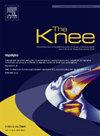英国膝关节腱鞘巨细胞瘤的当前管理
IF 2
4区 医学
Q3 ORTHOPEDICS
引用次数: 0
摘要
腱鞘巨细胞瘤(tgct)是一组罕见的良性间充质肿瘤,累及滑膜、滑囊或肌腱鞘。TGCT有两种亚型(结节性(nTGCT)和弥漫性(dTGCT)),目前关于这两种亚型的治疗指南是有限的。方法对英国骨科肿瘤学会会员进行问卷调查,了解会员对原发性和复发性TGCT的处理情况。调查对象被问及他们选择的放射学调查、活检的使用、手术和肿瘤管理以及随访情况。通过数据编码对定性数据进行描述性分析。结果共收到18份来自肉瘤外科整形外科顾问的回复。其中一人因在联合王国以外执业而被排除在外。磁共振成像(MRI)是一致的首选的调查选择。活检率因疾病程度、影像学表现和MDT输入而异。大多数外科医生治疗原发性和复发性结节性和弥漫性TGCT并进行开放切除。当手术由膝关节或软组织膝关节外科医生进行时,更有可能进行关节镜切除。分阶段切除是dTGCT最常见的治疗方法。dTGCT额外治疗的适应症因单位而异。随访方案也各不相同,尽管不出所料,弥漫性和复发性疾病的审查频率增加,持续时间更长。tgct是一种罕见的,复杂的疾病,包括一系列的表型。尽管最近召开了全球共识会议,但我们的数据显示,TGCT仍在英国各地进行调查、管理和随访,差异很大。本文章由计算机程序翻译,如有差异,请以英文原文为准。
Current management of Tenosynovial Giant Cell Tumours of the knee in the United Kingdom
Background
Tenosynovial Giant Cell Tumours (TGCTs) are a group of rare, benign, mesenchymal tumours involving synovium, bursae or tendon sheaths. There are two subtypes of TGCT (nodular (nTGCT) and diffuse (dTGCT)) and the current guidelines on the management of both is limited.
Methods
A questionnaire was distributed to members of the British Orthopaedic Oncology Society to investigate members’ management of primary and recurrent TGCT. Respondents were questioned on their chosen radiological investigations, use of biopsy, surgical and oncological management and follow up. Descriptive analysis of the qualitative data was performed through data coding.
Results
Eighteen responses were received from orthopaedic consultants subspecialising in sarcoma surgery. One was excluded due to practice outside of the United Kingdom (UK). Magnetic Resonance Imaging (MRI) was unanimously the primary investigation of choice. Biopsy rates varied depending on extent of disease, imaging appearances and MDT input.
Most surgeons manage primary and recurrent nodular and diffuse TGCT with an open excision. When surgery is performed by a knee or soft-tissue knee surgeon, excisions were more likely to be performed arthroscopically. A staged resection was most commonly performed for dTGCT.
Indications for additional therapies in dTGCT varied between units. Follow up regimens also varied, although unsurprisingly diffuse and recurrent disease were reviewed with increased frequency for a longer duration.
Discussion
TGCT is a rare, complex disease that encompasses a range of phenotypes. Despite a recent global consensus meeting, our data shows that TGCT is still investigated, managed, and followed up with great variability across the UK.
求助全文
通过发布文献求助,成功后即可免费获取论文全文。
去求助
来源期刊

Knee
医学-外科
CiteScore
3.80
自引率
5.30%
发文量
171
审稿时长
6 months
期刊介绍:
The Knee is an international journal publishing studies on the clinical treatment and fundamental biomechanical characteristics of this joint. The aim of the journal is to provide a vehicle relevant to surgeons, biomedical engineers, imaging specialists, materials scientists, rehabilitation personnel and all those with an interest in the knee.
The topics covered include, but are not limited to:
• Anatomy, physiology, morphology and biochemistry;
• Biomechanical studies;
• Advances in the development of prosthetic, orthotic and augmentation devices;
• Imaging and diagnostic techniques;
• Pathology;
• Trauma;
• Surgery;
• Rehabilitation.
 求助内容:
求助内容: 应助结果提醒方式:
应助结果提醒方式:


